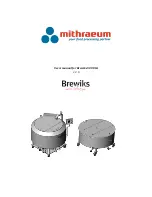
59
The gray keys other than the SHIFT key have either the mnemonic name of
the instruction or the abbreviation of the data area written on them. The func-
tions of these keys are described below.
Pressed before the function code when inputting an instruction
via its function code.
Pressed to enter SFT (the Shift Register instruction).
Input either after a function code to designate the differentiated
form of an instruction or after a ladder instruction to designate
an inverse condition.
Pressed to enter AND (the AND instruction) or used with NOT
to enter AND NOT.
Pressed to enter OR (the OR instruction) or used with NOT to
enter OR NOT.
Pressed to enter CNT (the Counter instruction) or to designate
a TC number that has already been defined as a counter.
Pressed to enter LD (the Load instruction) or used with NOT to
enter LD NOT. Also pressed to indicate an input bit.
Pressed to enter OUT (the Output instruction) or used with
NOT to enter OUT NOT. Also pressed to indicate an output bit.
Pressed to enter TIM (the Timer instruction) or to designate a
TC number that has already been defined as a timer.
Pressed before designating an address in the TR area.
Pressed before designating an address in the LR area.
Pressed before designating an address in the HR area.
Pressed before designating an address in the AR area.
Pressed before designating an address in the DM area.
Pressed before designating an indirect DM address.
Pressed before designating a word address.
Pressed before designating an operand as a constant.
Pressed before designating a bit address.
Pressed before function codes for block programming instruc-
tions, i.e., those placed between pointed parentheses <>.
4-4-2
PC Modes
The Programming Console is equipped with a switch to control the PC mode.
To select one of the three operating modes—RUN, MONITOR, or PRO-
GRAM—use the mode switch. The mode that you select will determine PC
The Programming Console
Section 4-4
















































